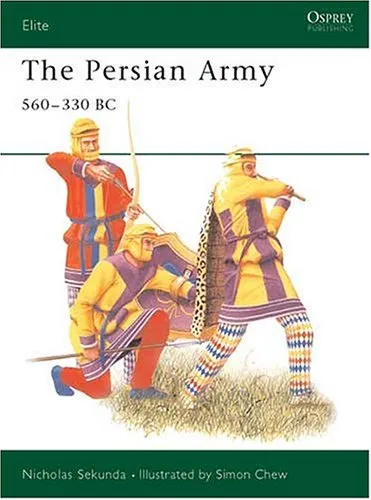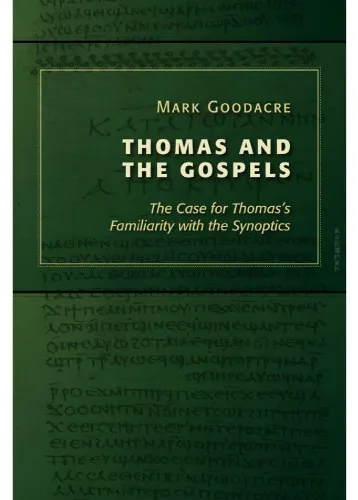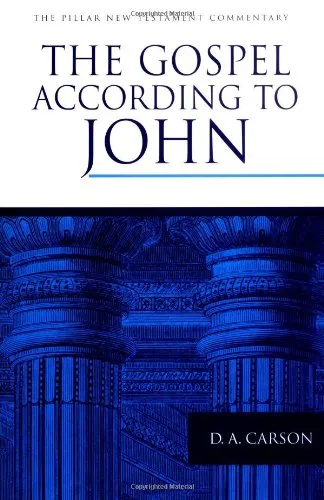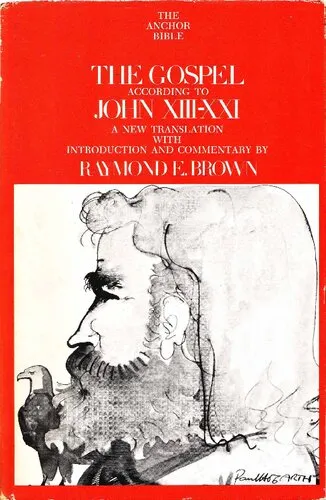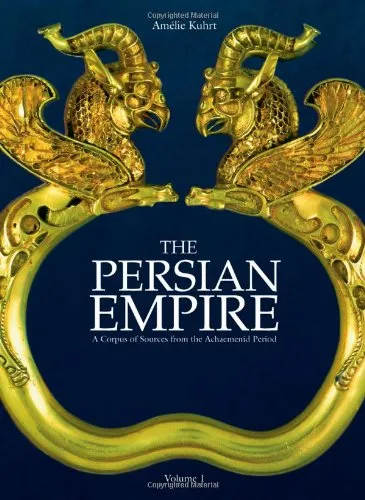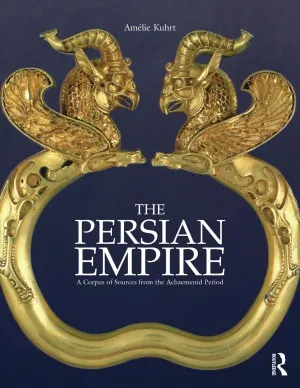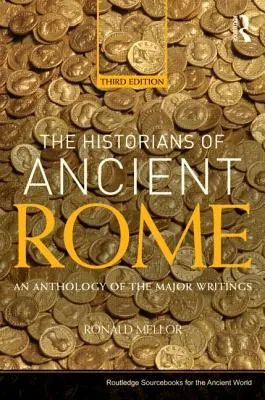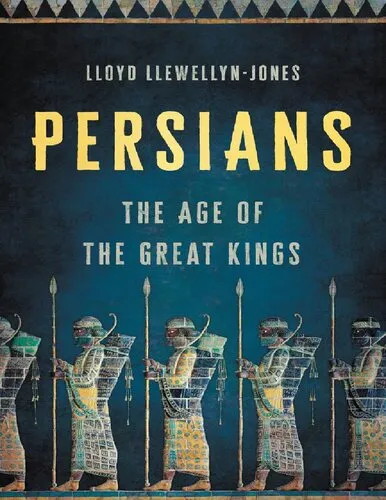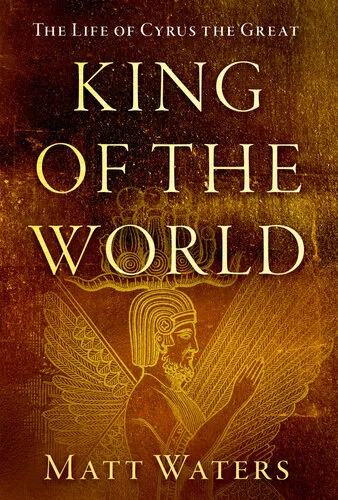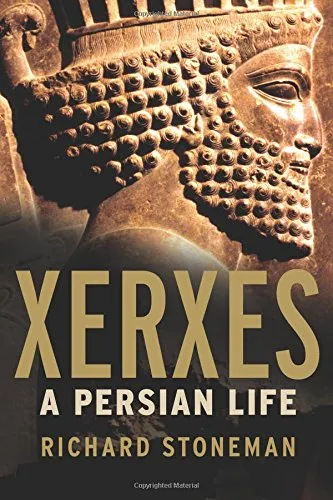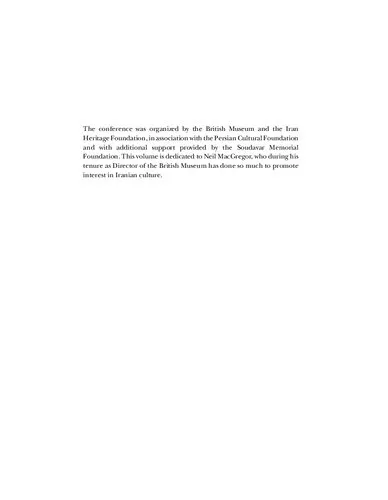Persian Army 560-330 Bc
4.0
بر اساس نظر کاربران

شما میتونید سوالاتتون در باره کتاب رو از هوش مصنوعیش بعد از ورود بپرسید
هر دانلود یا پرسش از هوش مصنوعی 2 امتیاز لازم دارد، برای بدست آوردن امتیاز رایگان، به صفحه ی راهنمای امتیازات سر بزنید و یک سری کار ارزشمند انجام بدینکتاب های مرتبط:
Persian Summary
معرفی کلی کتاب
کتاب Persian Army 560-330 BC نوشته نیکلاس سکندا و سایمون چو، به تحلیل و بررسی کامل تاریخچه و ساختار ارتش هخامنشی در دورهای بسیار مهم از تاریخی ایران میپردازد. این کتاب با رویکردی تحلیلی به خوانندگان کمک میکند تا با جزئیات پیچیدهای که نظامیان ایرانی را در این عصر تاریخی طراحی و سازماندهی کردند، آشنا شوند.
خلاصه کتاب
ارتش هخامنشی طی دوره ۲۳۰ ساله خود توانست یکی از بزرگترین امپراطوریهای تاریخ را بنا نهد. در این کتاب، نویسندگان با بهرهگیری از منابع تاریخی، تصاویر و دیاگرامهای گسترده به بررسی نقاط قوت و ضعف ساختار نظامی هخامنشیان پرداختهاند. از تاکتیکهای نظامی گرفته تا سازماندهی نیروها و فناوریهای نظامی آن دوران، هر بخش از این کتاب یک دیدگاه جامع و عمیق نسبت به ارتش هخامنشی فراهم میکند.
نکات کلیدی
- تحلیل ساختار و ترکیب نیروهای پیاده و سواره نظام.
- بررسی چگونگی ادغام فرهنگهای مختلف در ارتش هخامنشی.
- نقش سیاستهای نظامی در گسترش امپراطوری هخامنشی.
- تأثیر فناوریهای نظامی و اقدامات نوآورانه در عملیاتهای جنگی.
نقل قولهای معروف از کتاب
"ارتش هخامنشی نمادی از تعالی نظامی و فرهنگی بود که توانست اقوام و ملل مختلف را تحت یک پرچم رهبری کند."
چرا این کتاب مهم است؟
درک عمیق از تاریخ نظامی و نحوه عملکرد ارتش هخامنشی، برای هر کسی که به تاریخ و فرهنگ ایران باستان علاقهمند است، اهمیت دارد. این کتاب نه تنها دیدگاههای تاریخی را تقویت میکند، بلکه به خوانندگان کمک میکند تا بفهمند چگونه مجموعهای از فرهنگها و استراتژیهای نظامی به خلق یکی از بزرگترین امپراطوریهای جهان کمک کردهاند.
Introduction to 'Persian Army 560-330 BC'
The book "Persian Army 560-330 BC" offers an in-depth exploration into the military forces of the Persian Empire during the pivotal era marked by the ascendance and decline of one of history's greatest empires. Authored by Nicholas Sekunda and Simon Chew, this book provides a comprehensive account of the Persian Army in the context of its historical significance, organizational structure, and the strategic methodologies that allowed it to become a formidable power across Asia, Africa, and into Europe.
Detailed Summary of the Book
This book captures the essence of the Achaemenid Empire's military might, dissecting its influences, innovations, and operations from 560 BC to the empire's demise in 330 BC. Sekunda and Chew meticulously detail how the Persian Army, renowned for its engineering feats, logistical mastery, and diverse composition, was more than just a battlefield force – it was a central pillar of the Persian imperial structure. The narrative highlights the key reforms introduced under the reigns of notable emperors such as Cyrus the Great, Darius the Great, and Xerxes. The text also examines the administrative mechanisms, ranks, and strategic doctrines that contributed to the army's successes and failures.
Key Takeaways
- The Persian Army was instrumental in establishing one of the largest empires in history, providing a template for military strategy and organization.
- Diversity within the army was pivotal; troops were drawn from all corners of the empire, each bringing their distinctive skills and combat tactics.
- The Persian approach to warfare extended beyond the battlefield, incorporating diplomacy, infrastructure, and psychological strategies.
- The eventual downfall of the Persian military can be attributed to internal strife, overextension, and the lack of innovation against better-organized forces like Alexander the Great's Macedonian army.
Famous Quotes from the Book
"The Persian Army was a tapestry of cultures, echoing the vast expanse of an empire that stretched from the Indus Valley to the fringes of Greece."
"In the heart of Persia's military machine lay an unmatched logistical prowess; a triumph of organization over chaos."
Why This Book Matters
"Persian Army 560-330 BC" is not just a historical recount but a deep insight into the mechanics of one of history's great armies, providing readers with a richer understanding of ancient warfare dynamics. It encapsulates the essence of Persian culture and governance, showing how these elements combined to forge a military legacy that would be studied and admired by many succeeding generations. The book serves as a crucial reference for historians, military enthusiasts, and anyone interested in the cultural and tactical sophistication of the ancient world. By studying the Persian Army, one gains valuable lessons on the impact of leadership, innovation, and the integration of diverse cultural practices into a coherent, effective force.
دانلود رایگان مستقیم
شما میتونید سوالاتتون در باره کتاب رو از هوش مصنوعیش بعد از ورود بپرسید
دسترسی به کتابها از طریق پلتفرمهای قانونی و کتابخانههای عمومی نه تنها از حقوق نویسندگان و ناشران حمایت میکند، بلکه به پایداری فرهنگ کتابخوانی نیز کمک میرساند. پیش از دانلود، لحظهای به بررسی این گزینهها فکر کنید.
این کتاب رو در پلتفرم های دیگه ببینید
WorldCat به شما کمک میکنه تا کتاب ها رو در کتابخانه های سراسر دنیا پیدا کنید
امتیازها، نظرات تخصصی و صحبت ها درباره کتاب را در Goodreads ببینید
کتابهای کمیاب یا دست دوم را در AbeBooks پیدا کنید و بخرید
1420
بازدید4.0
امتیاز0
نظر98%
رضایتنظرات:
4.0
بر اساس 0 نظر کاربران
Questions & Answers
Ask questions about this book or help others by answering
No questions yet. Be the first to ask!
